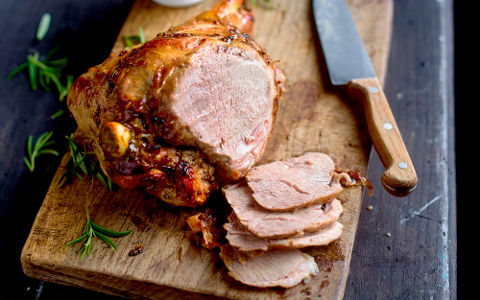
Irish lamb is heading to the United States. Image – Bord Bia.
AUSTRALIAN lamb is set to meet competition from Irish product in the United States under an agreement allowing sheep meat imports from Ireland into the US.
Ireland’s Minister for Agriculture, Food and the Marine, Charlie McConalogue, has announced that agreement has been reached with the United States Department of Agriculture (USDA) on a veterinary health certificate for the export of Irish sheep meat to the US.
Securing agreement on a bilateral health certificate allows Irish sheep meat plants to formally apply for approval to export to the US. It also builds on the publication last December of a USDA rule which removed restrictions on exports of most sheep and goat products from the EU.
Minister McConalogue said the agreement provides full access for Irish sheep meat to the US market.
“It marks another welcome move in the diversification of overseas markets for Irish sheep meat in line with the Food Vision 2030 goal of accessing and developing new market opportunities in priority markets.
“It is the result of diligent work by my officials and the Embassy of Ireland in Washington DC, following the lifting last December of the US ban on EU sheep meat exports,” he said.
Chief executive officer of the Ireland’s food board Bord Bia Tara McCarthy said there has never been a better time for Irish companies to export lamb to the US, with Bord Bia research showing that lamb consumption is growing amongst consumers, particularly in the younger age categories in North America.
Ms McCarthy said the announcement will allow Bord Bia and the Irish sheep meat industry to build on the already positive image of Ireland within the US and allow for an expansion of the product range under consideration by US importers, wholesalers and ultimately consumers.
According to Bord Bia’s market insights, import volumes of sheep meat to the US have increased from 103,527 tonnes in 2015 to 166,165 tonnes in 2021. Of last year’s imports, approximately 68pc was frozen and 32 percent was chilled. Australia and New Zealand account for the majority of imports to the US, representing 98pc of all imports in volume terms.
“In June, Bord Bia launches a three-year EU co-funded beef and lamb promotion in the US, called ‘Working with Nature’.
“This campaign sees Bord Bia investing €1 million in marketing and promotional seminars, events and promotional activities from 2022 to 2025,” she said.
Minister Conalogue said the speedy agreement on certification conditions with the US comes after many years of preparatory work; in particular, UDSA recognition in 2019 of the equivalence Ireland’s sheepmeat inspection system with US domestic standards. It is, therefore, very much a testament to the high standards and reputation of Irish sheep farming. Our sheep farmers are world class producing a safe, sustainable and healthy product that is in demand in markets across the globe.”
The minister will this week lead a major agri-food trade mission to the United States (Chicago, Ohio and Washington D.C.), in cooperation with Bord Bia, while Minister of State Martin Heydon will lead engagements in Texas and Mexico.
Ireland’s Minister of State for New Market Development Martin Heydon said it is important to touch base with our growing markets in the southwest of the US – especially Texas – and Mexico to underline the strong credentials of our agri-food exports.
“Mexico is also a potentially important export market for Irish pigmeat, and I look forward to engaging with key stakeholders from Mexican Government, retail and hospitality sectors to help maximise this opportunity for the Irish pig sector.”
Ms McCarthy said the US is now Ireland’s second largest export market after the UK, with exports last year valued at €1.3 billion, up 22pc on 2020.
“This trade mission sees Bord Bia engaging in a series of strategic buyer meetings that will support Irish food and drink companies in their efforts to deepen existing key trade relationships and to create new business opportunities.
“Our focus this week is on business generation and conversion, building the reputation of Irish food and drink exports and identifying value-added opportunities for exporters.”



HAVE YOUR SAY